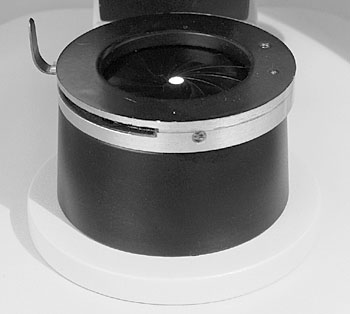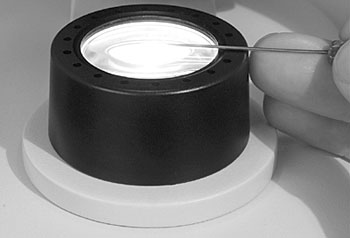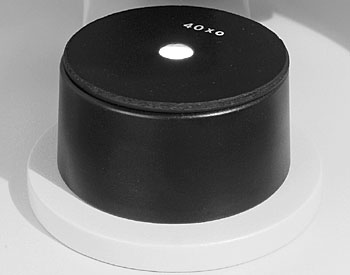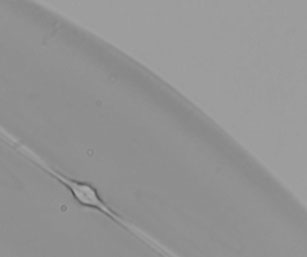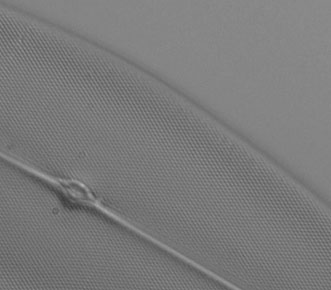At mags up to about 20x, the lack
of a lamp diaphragm may only have a small effect on the image, especially
if the microscope's internal tubes are well blacked. But at higher mags,
or if using immersion objectives, there can be a marked increase in glare
which will degrade image quality.
| This built-in lamp on a current
mid-priced microscope has no diaphragm, so the illuminated field will always
be 35 mm wide (in this case) for all objectives. Only the 3.5x objective
really needs a field this wide.
A lamp diaphragm when present should usually be adjusted so that the iris blades just clear the visual field of the objective (with subject in focus and with condenser focused on iris edge). For this microscope, these were typical measurements.
|
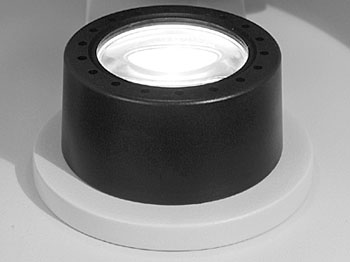 |
| The test diatom Stauroneis pheonicenteron
under a 50x NA1.0 oil immersion objective using the microscope above (with
correctly adjusted Abbe condenser). The resolution is there but the contrast
is poor. The lack of contrast is more marked in the visual field.
'As captured' crop of video still from a security camera. |
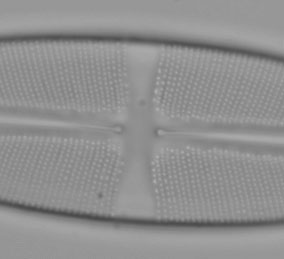 |
| Exactly the same set-up, except
an iris diaphragm was placed on the lamp base stopped down to limit the
lamp field to just outside the objective's field of view (see below).
'As captured' crop of video still from a security camera.
|
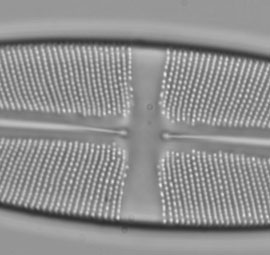 |
However, it's extremely easy to remedy the lack of a lamp diaphragm, so here's two approaches to improve a microscope with built-in lighting which suffers from this.
